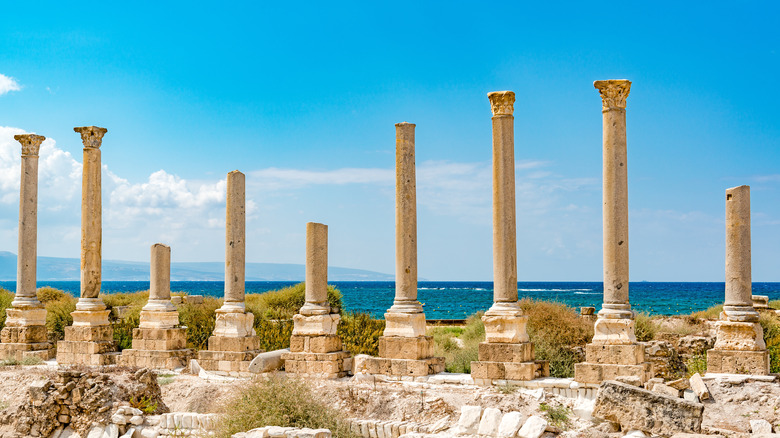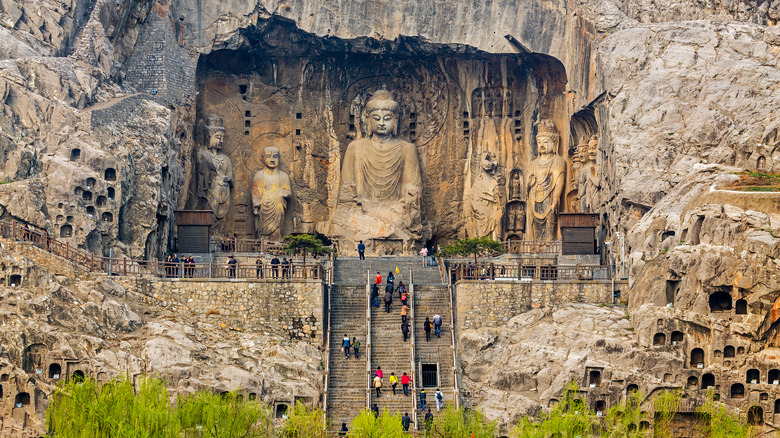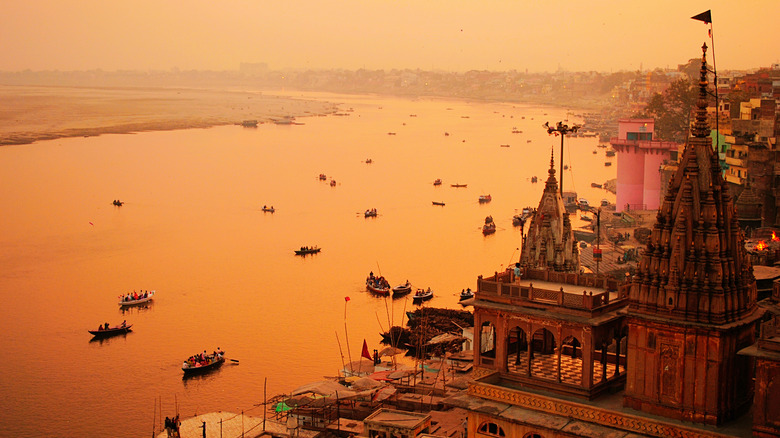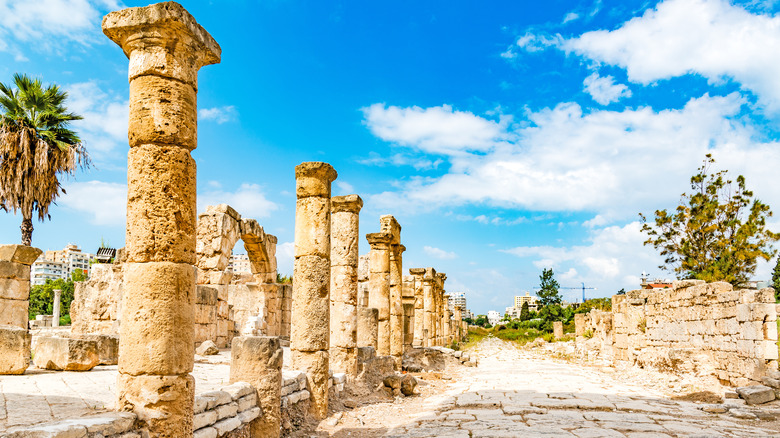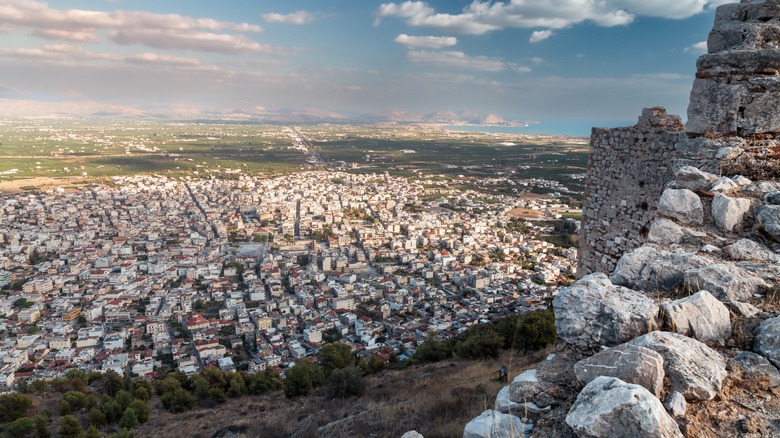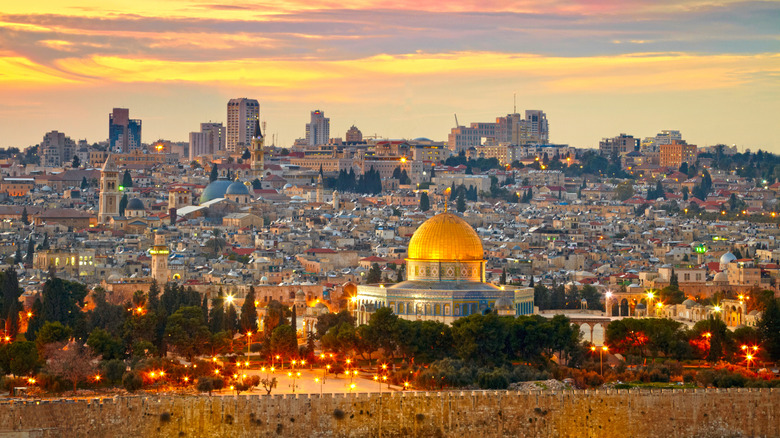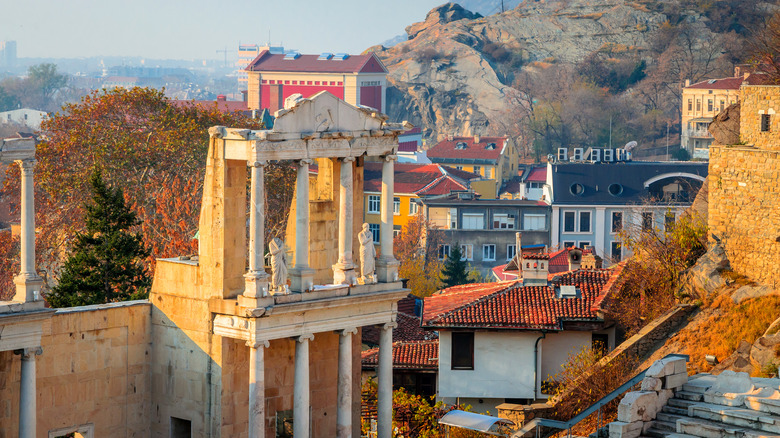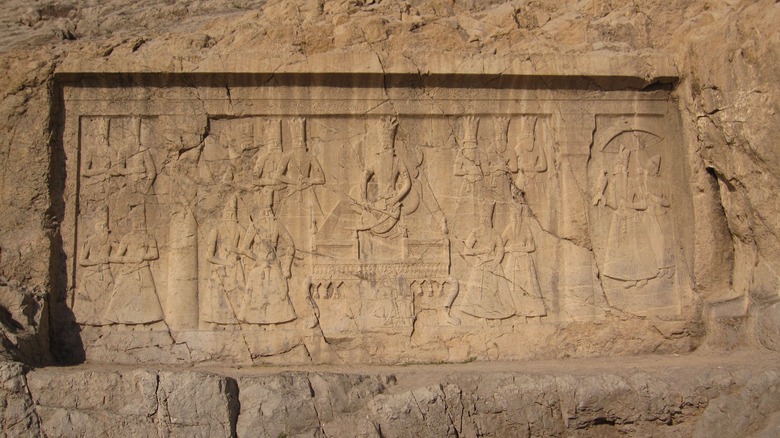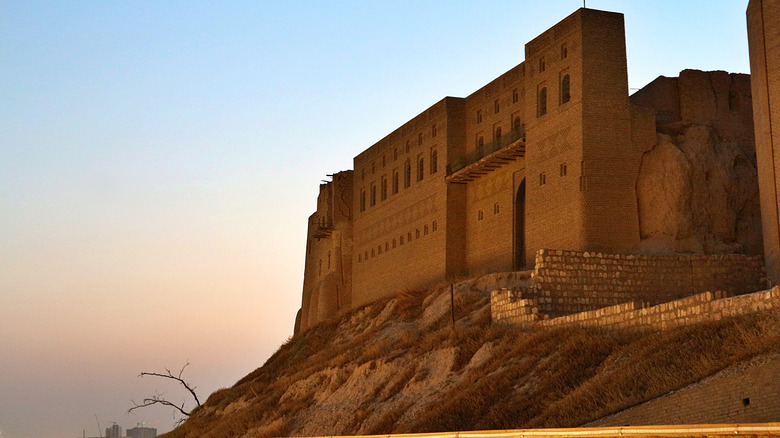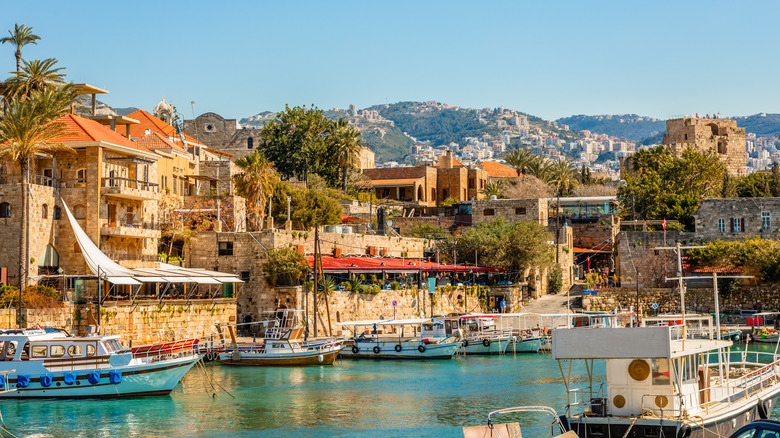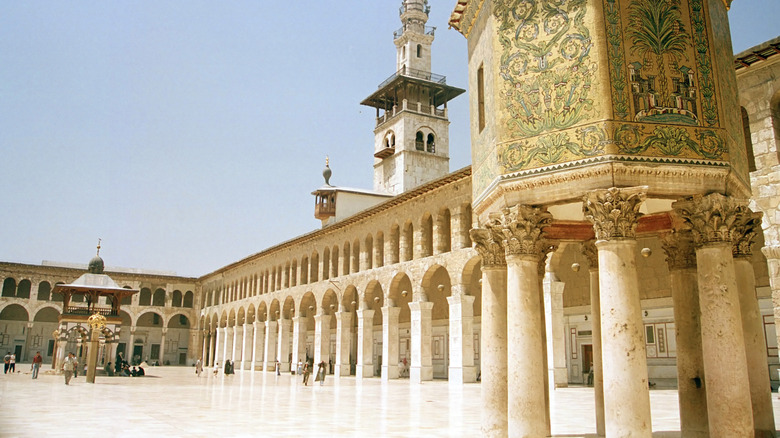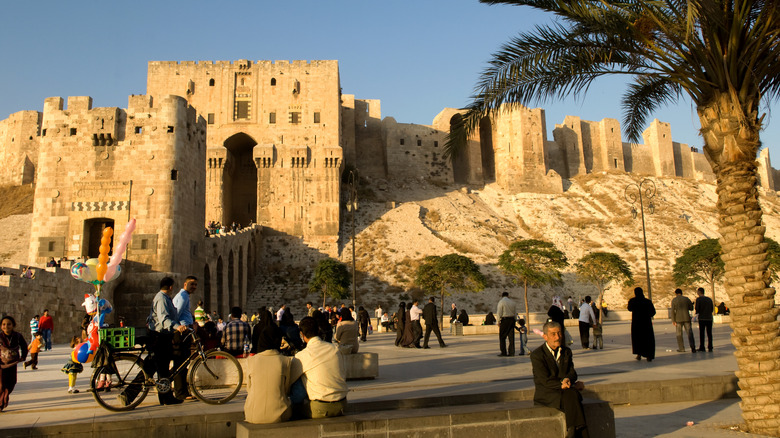The Oldest Inhabited Cities In The World
Around 10,000 B.C. mankind first began to settle down into small farming communities that eventually grew into the world's first cities. Many very famous cities from these early cradles of civilization — in the Middle East, China, and India among other places — have vanished from the face of the earth. Often they have been reduced to rubble by opportunistic invaders or abandoned due to instability. The few very ancient cities that have made it to our time more or less unscathed are therefore very special, having overcome some crazy odds throughout mankind's strange and violent story.
Readers should note that the dates of most of these ancient sites are still disputed, and their great age depends on how you define a city or a settlement. Some people differentiate between when a city was officially founded and when people first started living in the area in small groups. In many other cases, local buildings have obscured archaeological sites that could potentially reveal better and more accurate dates. Other cities have often been trapped in conflict zones, and have only been tentatively investigated. Finally, disputes over dates are often colored by religion, politics, and a desire for fame. Nonetheless, the cities that follow all have incredibly long and well-documented histories and deserve to be recognized as a vital part of humanity's heritage.
Luoyang, China
Luoyang in Henan province in China is a strong candidate for the oldest city in the Far East. Its ancient status is still a controversial subject, however, because it is believed to be connected to China's mysterious first dynasty — the Xia Dynasty — which governed part of China before the development of the written word.
What little we know about this Xia Dynasty comes from legend, and some people believe it did not exist at all. However, in 1959 archaeologists dug up thousands of expertly crafted goods at Erlitou in Luoyang, which date from as early as 1600 B.C. — around the time the Xia were supposed to have ruled (per Global Times). Among their finds were precious bronze objects and luxurious jade jewelry, suggestive of a highly organized ancient civilization.
Whether or not the fabled Xia ruled from Luoyang, the finds prove that the city is one of the most ancient and important cultural sites in China. In later recorded history, Luoyang went on to achieve great fame, becoming the Chinese capital multiple times, under the Eastern Zhou, Han, and Sui dynasties, among others. During the early medieval Tang Period, the city would also reach great heights as a sophisticated multicultural center — filled with Buddhist monasteries and Muslim mosques, as well as grand public buildings and gardens. Sadly, Luoyang suffered a terrible sack at the end of the Tang Period and was never quite the same again, although it has survived till the present day.
Varanasi, India
Varanasi (Banaras), is probably the oldest still-inhabited city in India, and it is definitely one of the holiest. Situated on the River Ganges, the pinkish-red city draws in visitors from across India, who gather on the riverbanks to see off their dead.
The dates of the first settlements at Varanasi are of great interest to Hindus the world over, because the history of the city is closely tied up with a whole host of religious stories, and it is even mentioned in the "Mahabharat." In 2014, a series of pottery finds confirmed that people have been living in the area since at least as early as 1800 B.C. (via the Business Standard).
It is difficult to separate fact from fiction when talking about Varanasi but Buddhists believe that Buddha preached near the city. Hindus on the other hand believe that Shiva founded the settlement, and the Jains believe one of their holiest figures was born here. Most importantly, those who die in Varanasi are said to be blessed, as they are able to exit the endless cycle of death and rebirth. Year-round Varanasi is filled with funeral fires, processions of mourners, and spiritual seekers, who arrive to take in the city's hallowed atmosphere, as people have done for many centuries.
Tyre, Lebanon
The city of Tyre in Lebanon was once one of the wealthiest cities on earth, and today it is one of the oldest. At least 4,000 years old, Tyre was already a major city by 2000 B.C., when it acted as a lucrative Phoenician trading port. There are various interesting ancient myths about the supposedly divine origins of Tyre, once believed to be a magical free-floating island until it was safely secured to the coast through the building of a holy temple on the shore. The city also appears quite frequently in the Bible, in both the Old and New Testaments, as a place of great renown.
While the Phoenicians built many great cities across the Mediterranean, Tyre was one of the most significant because of its famous dye industry. Purple dye is very hard to make because it is one of the rarest colors in nature, but the people of Tyre discovered they could stain cloth purple using crushed-up sea snails. "Tyrian purple" thus became incredibly valuable due to its rarity, and Tyrian cloth was used by royalty. It was so prized that, according to the BBC, "Phoenicia" literally means the land of purple.
The Tyrians would continue making their expensive dye right up until the Middle Ages when other purple dyes were invented. In later centuries, Tyre became more closely associated with its less glamorous fishing industry instead, but its ancient lustre has never quite worn off and it still attracts hordes of tourists today.
Argos, Greece
Argos is one of Greece's oldest cities, and the Hill of Elias in Argos was first inhabited by Stone Age people as early as 3500 B.C. A little while later (around 2000 B.C.) the city was officially settled by a mix of Phoenician and Egyptian outsiders who mingled with the local Greeks.
Argos became a major city during the Bronze Age Mycenaean Period. Long before Greece was adorned with classical temples and ancient theatres, the Mycenaean Greeks lived in a more primitive fashion, politically organized around a series of small palace complexes in places like Argos. The lives of these pre-classical Greeks are obscured by ancient legends, and Argos in particular appears many times in the "Iliad," by Homer, the ancient epic about the Trojan War. In the poem, Homer claims that the men of Argos were favored by the Goddess Hera and that they fought alongside many other Greek city-states to retrieve the beautiful Helen from her Trojan kidnappers.
By the classical era, Argos like many city-states in Greece experimented with democracy, produced lifelike sculptures, and wound up embroiled in endless petty wars with other Greeks. Like other city-states too, Argos eventually lost its ancient independence thanks to the rise of the Romans, who rendered the city just another provincial backwater.
Jerusalem, Israel
The city of Jerusalem has been inhabited since at least 3500 B.C. Many of its ancient sites have been thoroughly investigated thanks to their significance to three of the world's major religions. On the other hand, Scientific American has argued that Jerusalem's very ancient pre-Jewish roots do not particularly interest religiously motivated archaeologists, so we still do not know that much about Jerusalem's very earliest settlements. As recently as 2005, for example, an academic punch-up occurred over a site that some have argued was once the palace of King David, and which others claim is a much older Canaanite structure from the early Bronze Age.
During its very early history, Jerusalem was conquered by King David, probably around 1000 B.C. What this early Jewish kingdom was like and how old it is — like many other aspects of Israeli history — is mired in political and religious controversy.
Jerusalem's history has always been fairly turbulent; the first and second Jewish temples were destroyed by the Babylonians and the Romans. With the rise of Christianity and Islam, Jerusalem also became a holy city for many other people, which means that it has changed hands between the different religions many times — sometimes violently, as during the Christian crusades. As readers will know, controversies over who truly owns the holy city continue today.
Plovdiv, Bulgaria
Ancient Plovdiv, on the Maritsa River in Bulgaria, is believed to be the oldest continuously inhabited city in Europe. Built upon seven hills just like the much younger city of Rome, Plovdiv has layers upon layers of history, having been occupied by the Macedonians, the Romans, the Byzantines, and the Ottomans at various stages in its history. Today, Plovdiv's incredible museum holds an impressive collection of at least 100,000 artifacts from several millennia of action-packed history.
Although Plovdiv's story stretches back to the Copper Age, the city first became a place of some note as part of ancient Thrace. The Thracians were the hardy neighbors of the ancient Greeks, and they are frequently mentioned in ancient Greek sources (via The Metropolitan Museum of Art Bulletin). Unfortunately, the writings about ancient Thrace should be taken with a grain of salt because they ar written through a Greek lens, and these snobbish outsiders characterized the semi-nomadic horse-riding Thracians as barbarians with a mad lust for treasure.
Sadly, Thracian Plovdiv's independence was short-lived. Phillip II of Macedon (Alexander the Great's dad) conquered it in the fourth century, greek-ifying it for the long haul, and marking the beginning of many centuries of occupation by various imperial powers.
Ray, Iran
Ray (also spelled Rayy or Rey), is among the oldest cities in Iran. Finds from Češmeh ʿAli mound in the heart of Ray produced pottery from as early as 5500 C.E., indicating people were already settling down in the Neolithic.
While Ray has been witness to many major events, including the raids of the Mongol hordes and the rise of Islam, by far its biggest claim to fame is its connection to the prophet Zoroaster. According to at least one tradition, the Zoroastrian prophet who founded the great Persian religion once lived in ray (raga) thousands of years ago. Still a holy city today, Ray is mentioned in the Zoroastrian holy book, the Avesta.
The city later had a brief stint as capital under the Parthian Empire — one of ancient Rome's mortal enemies. Its strategic position also made it a major military outpost shortly after the Arab conquests and during the rule of Seljuk Turks. By the High Middle Ages, however, the city eventually lost its importance in favor of Tehran, after it was brutally sacked by the Mongols.
Faiyum, Egypt
Faiyum "the land of lakes" is an oasis city on the River Nile, first occupied around 7200 B.C. and already an important farming community by at least the year 5200 B.C. In ancient times, Faiyum was actually made up of several cities that have merged together over many centuries. The most famous and powerful of these was the city of Shedet — "Crocodilopolis" to the Greeks. A true haven for wildlife, including roving crocs, Shedet became home to the cult of Sobek — the terrifying crocodile god venerated by the ancient Egyptians. The Sobek deity is as old as the city itself, one of the first gods to appear in the ancient Egyptian Pantheon. The god was responsible for overseeing the Nile's fertile floodwaters, and when Shedet was briefly the administrative capital of Egypt during the 12th Dynasty he became a symbol of royal power.
Faiyum's other major claim to fame comes from its time under Roman control when the merging of Roman and Egyptian cultures resulted in the famous Faiyum mummy portraits. These eerie pictures are some of the best-preserved paintings from the ancient world, and they were used to adorn mummies in a distinctly Roman style.
Although the area around Faiyum would wane in importance along with the Egyptians themselves, its life-giving waters kept people hanging around. Today, Faiyum remains a quiet farming region, bursting with wildlife, but rarely visited by tourists.
Erbil, Iraqi Kurdistan
Iraq was once one of the cradles of human civilization, a place where many of man's first cities sprung up along the fertile banks of the Tigris and Euphrates rivers. However, many of its most famous ancient cities — Ur, Babylon, and Nineveh no longer exist today. You may not have heard of Erbil (Hewler to the locals and Arbela to the ancients), but this incredibly ancient city grew up alongside the greats and survived them.
Crowned with one of the oldest and most spectacular citadels in the Middle East, Erbil, like many Near Eastern cities was associated with a specific deity. Ishtar, the Queen of heaven was a sort of warlike Aphrodite and a one-time patron of Erbil. Ishtar's hallowed temple, along with the rest of the ancient city, has sadly been buried under several millennia of human activity. According to Archaeology Magazine, at its height, it once had a powerful reputation as a place of worship and may even have been gilded in bright layers of silver and gold. Erbil's citadel may date back to as early as 7000 B.C., placing it quite comfortably among the world's oldest cities.
Byblos, Lebanon
Beautiful Byblos is a very ancient city in Lebanon, made famous by the ingenious seafaring Phoenicians. The city's earliest origins stretch back long before the Phoenicians rose to prominence however, and there is evidence that humans have been living in the area since way back in the Neolithic, between 4000 and 8000 B.C. Byblos was at its most powerful prior to the rise of Alexander the Great when the inhabitants of Byblos turned the city into a major trading hub and got rich off the sale of cedar trees — used to make ancient ships. Today the cedar still features on the Lebanese national flag.
The city's ancient inhabitants actually called the town "Gebal," but the Greeks called it Byblos — which came to mean "book" in the Greek language. This is no coincidence, and in general, the clever Greeks owed a great cultural debt to the Phoenicians. The Phoenicians gave the Greeks their alphabet, and the city of Byblos sold the Greeks the papyrus they needed for their philosophical scribblings.
Although Byblos later got tangled up in the Christian crusades and sports some impressive medieval fortifications, it was never really politically significant again. Today, visitors are nonetheless still attracted to the warm honey-colored stones of the ancient city, now a peaceful port-town — awash with tourists.
Damascus, Syria
Beleagured Damascus, which has been through so much in the last decade, is no stranger to trouble and has survived many violent onslaughts throughout its incredibly long history. Countless empires have cycled through this great city, a glittering prize for any conqueror, famous for its luxury goods and fabulous gardens.
Damascus has sometimes been celebrated as the oldest city in the world, although it has stiff competition for its neighbor Aleppo. Nonetheless, it is certainly in the top three, having been settled by ancient humans between 8000 and 10,000 B.C. The city grew out of the Ghouta Oasis, a lush fertile area attractive to farmers and beauty lovers alike. In later periods, the city was known for damask silks and fragrant jasmine. It was the perfect spot for roaming pilgrims and trade caravans to rest up and spend their cash.
Damascus' golden age came during the Middle Ages after it became the capital of the Muslim Umayyad caliphate. In its heyday, countless travelers sang the city's praises, and it was furnished with one of the world's grandest mosques, which still glitters with gold and green mosaics today. This holy site alone sits on a veritable mountain of history, having been the site of a Roman Church, a Temple to Jupiter, and a temple Ramman-Hadad — an ancient deity from earliest antiquity.
Aleppo, Syria
People have been hanging around Aleppo since around 11,000 B.C., which makes it a strong candidate for the world's oldest city. In 2007, Reuters reported that archaeologists had found one of the world's oldest stone-age paintings (more than 11,000 years old) along with a number of tools and flint arrowheads, just north of the city.
Like its neighbor Damascus, many people used to pass through Aeppo while traveling along the ancient silk route that brought exotic goods from China to Europe. But Aleppo was more than a simple traveler's rest stop, it was once the capital of the ancient kingdom of Yamkhad, a little-known ancient power that was eventually destroyed by the aggressive Hittites.
For most of its history, however, Aleppo's fortunes have been rocky. Although the city briefly gained great renown as the medieval capital of the Hamdanid dynasty, it also suffered through a lucrative number of wars and invasions. Among the people who attacked and occupied Aleppo are many of the usual suspects — including Alexander the Great, the Romans, the Arabs, the Mongols, and the Ottomans.
